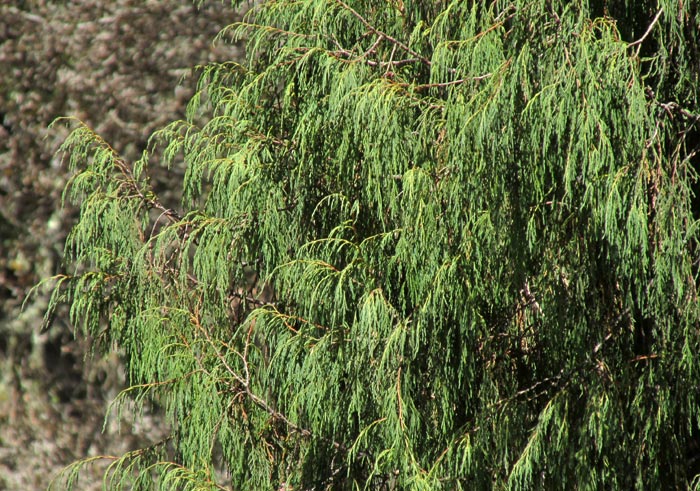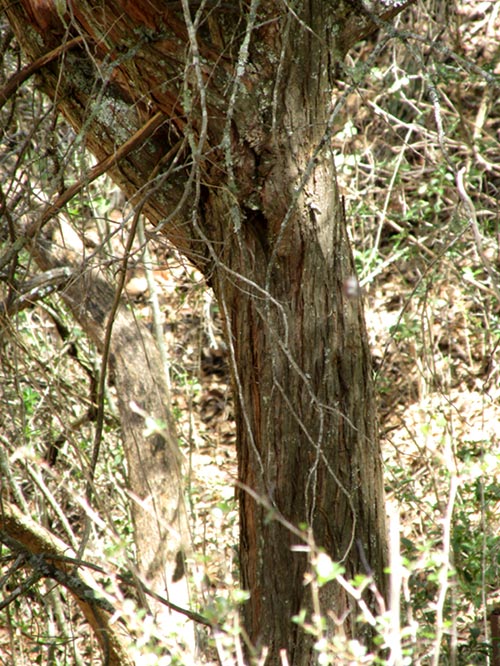Excerpts from Jim Conrad's
Naturalist Newsletter
from the February 16, 2007 Newsletter issued from Sierra Gorda Biosphere Reserve, QUERÉTARO, MÉXICO
WEEPING JUNIPERS

Here and there at higher elevations you pass through juniper forests. These junipers aren't like the bushy, gnarly junipers of western North America's arid lands, or like the East's Redcedar. Rather, they grow to about 30 feet tall, are round-topped and well proportioned and -- most distinctly -- their branches droop. The tree goes by such names as Weeping Juniper, Drooping Juniper and Mexican Juniper. It's JUNIPERUS FLACCIDA, the epithet "flaccida" based on Latin "flaccidus," for "flabby." You can see our Weeping Juniper's flabby branches with its fruits a good bit larger than the Eastern Redcedar's at the right.
The tree's bark is reddish-brown and exfoliates in broad, interlaced, fibrous strips. On certain slopes and valley floors the species forms almost-pure stands. Often in such forests the floor is crusty with green moss. Such forests convey a sense of their having been crafted by an attentive artisan.
Weeping Junipers are native Mexican trees, barely extending into Texas in the Big Bend area. They display a curiously fragmented distribution pattern, as shown on a map at Wikimedia.
There must be around 60 species of juniper, which typically are dioecious (male flowers on one tree, female on another), and rarely do their branches droop. One has to ask why this particular species does droop. I think one hint to the answer is that in the same general environment -- at high elevations where the air is so humid that often cloudforests grow nearby -- there live similarly droopy-branched Mexican Weeping Pines, Pinus patula.
Both of these species live where often cloud-fog saturates the air around them, causing water to condense on their leaves. My guess is that the species' droopiness facilitates the drying of the branches by making it easier for water to run straight down a drooping branch, to drip off the bottommost tip.
entry from field notes dated April 16, 2022, taken in disturbed/reforesting borderline cloudforest within 1km of Valle de los Fantasmas, elevation ±2,320m (7600 ft), with limestone bedrock; about 40kms (24 miles), straight-line, ESE of San Luis Potosí, San Luis Potosí state, MÉXICO, (N22.06°, W100.62°)
BRANCHES & TRUNK

Above is another look at the drooping branches, on another tree. Below, you can see that the trunk has a slight reddish hue, and tends to produce narrow, vertical shreds of bark:
